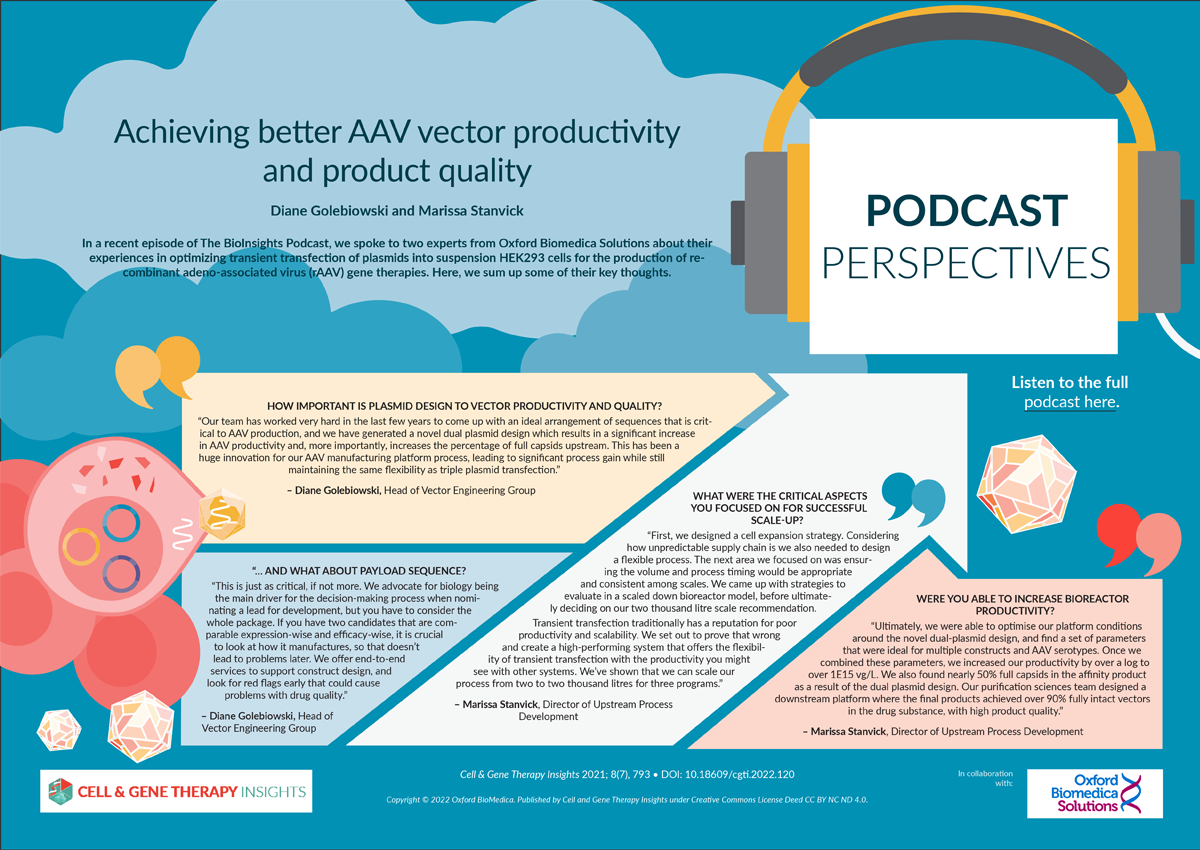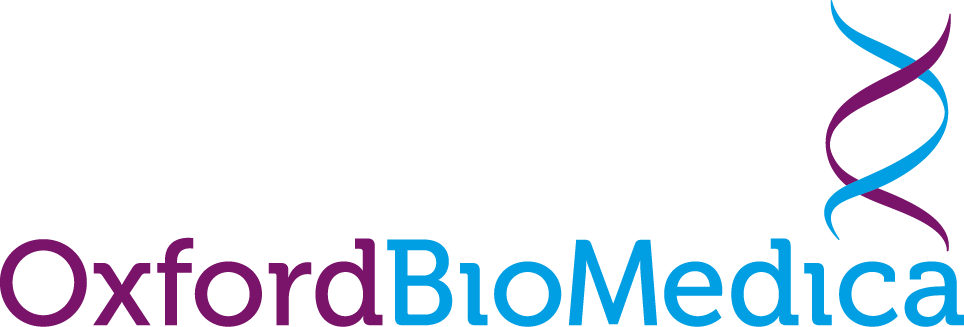Achieving better AAV vector productivity and product quality
Cell & Gene Therapy Insights 2022; 8(7), 793
DOI: 10.18609/cgti.2022.120
Transient transfection of plasmids into suspension HEK293 cells is still the most commonly used method for the production of recombinant adeno-associated virus (rAAV) gene therapies – in this episode, Diane Golebiowski and Marissa Stanvick discuss ways to optimize that process.
Charlotte Barker, Editor, BioInsights, speaks to Diane Golebiowski and Marissa Stanvick, Oxford BioMedica Solutions
You can listen to the podcast here, or view the poster below.

If you enjoyed this episode, you can listen to all episodes from The BioInsights Podcast wherever you normally get your podcasts.
Follow the Podcast to make sure you don't miss the next episode.
Episode Guests
Diane Golebiowski
Associate Director,
AAV Platform Development,
Oxford Biomedica Solutions
Marissa Stanvick
Director,
Oxford Biomedica Solutions
Authorship & Conflict of Interest
Contributions: All named authors take responsibility for the integrity of the work as a whole, and have given their approval for this version to be published.
Acknowledgements: None
Disclosure and potential conflicts of interest: The authors are employees and stock holders of Oxford Biomedica.
Funding declaration: The authors received no financial support for the research, authorship and/or publication of this article.
Article & copyright information
Copyright: Published by Cell and Gene Therapy Insights under Creative Commons License Deed CC BY NC ND 4.0 which allows anyone to copy, distribute, and transmit the article provided it is properly attributed in the manner specified below. No commercial use without permission.
Attribution: Copyright © 2022 OXB Solutions. Published by Cell and Gene Therapy Insights under Creative Commons License Deed CC BY NC ND 4.0.
Article source: From a podcast recorded on: Jul 12 2022; Publication date: Aug 5 2022.

